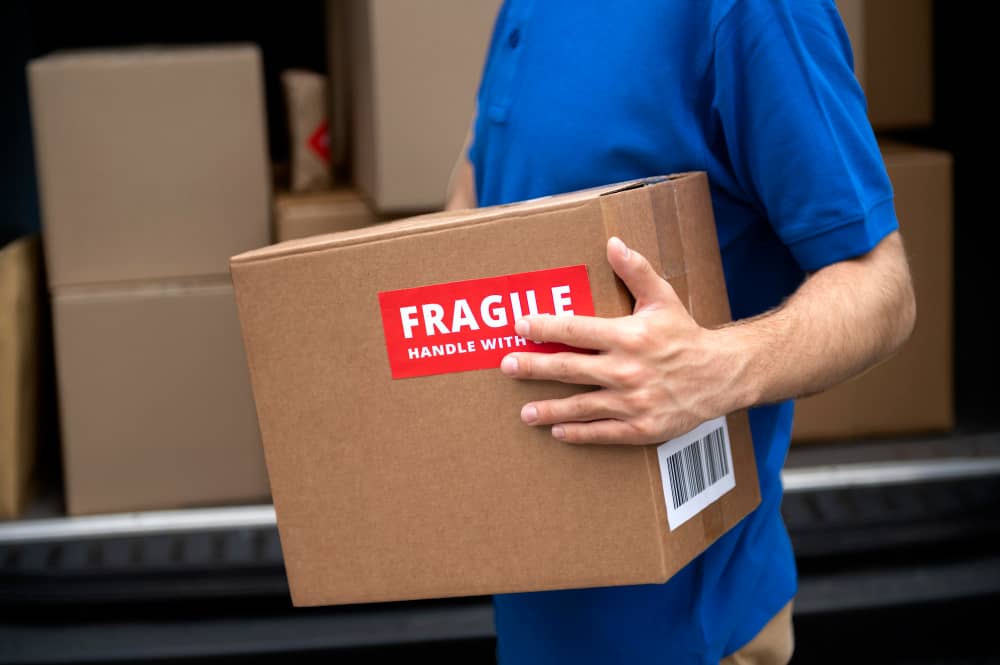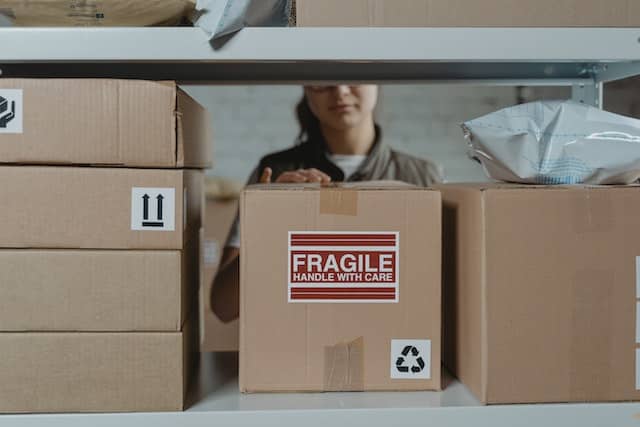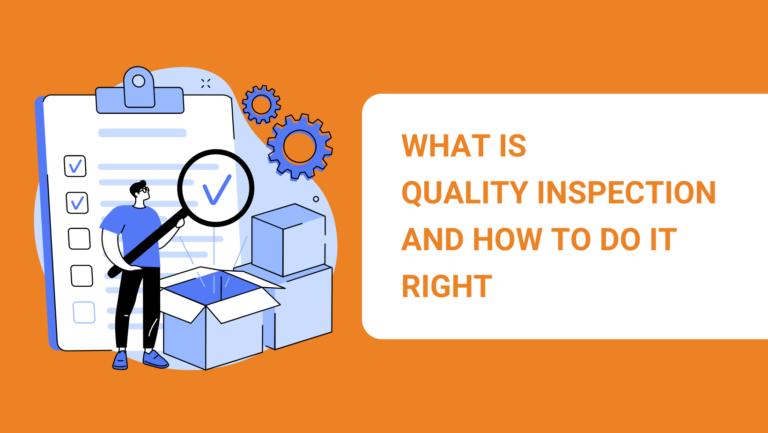Quality inspection refers to the process of examining, testing, and measuring various attributes of a product to ensure it meets pre-specified standards.
As a seller, conducting thorough inspections is crucial to avoid delivering defective products that could harm your reputation and affect customer satisfaction.
By systematically checking your products based on specified standards, you can identify potential issues before they reach your customers.
Furthermore, by conducting quality inspections, you are fostering a culture of continuous improvement and transparency, which can ultimately lead to improved customer trust and loyalty.
Key Takeaways
- Quality inspection is critical to product sourcing, helping sellers maintain product quality and customer satisfaction.
- Thorough inspections can help identify potential defects, ensure compliance with regulatory standards, and protect brand reputation.
- By conducting routine quality checks, sellers foster continuous improvement and transparency, increasing customer trust and loyalty.

Types of Quality Control
Incoming Quality Control
As a part of your product sourcing process, you need to ensure that the raw materials you receive meet your required quality standards. This is where Incoming Quality Control comes into play.
Incoming Quality Control (IQC) involves inspecting the materials arriving from suppliers before they enter the production process.
By examining the quality of these materials, you can catch any potential issues early on, saving you from potential problems down the line.
Some common checks during IQC include:
- Verifying material specifications
- Checking for defects or damages
- Testing the functionality of components
In-Process Quality Control
Once your raw materials pass the initial inspection, it’s time to focus on the production process. In-Process Quality Control is crucial in maintaining a high level of product quality throughout the manufacturing process.
With this approach, you regularly monitor and assess the production process to identify and address any issues that may arise during manufacturing.
In-Process Quality Control can involve a variety of activities, such as:
- Random sampling of products at different stages of production
- Implementing strict guidelines for workers to follow
- Using advanced technology to detect and correct deviations from the process
Remember, consistent quality management during production can save you time, effort, and money by preventing defective products from reaching the final stage.
Outgoing Quality Control
Congratulations! Your products are almost ready to be shipped out to customers. But before they leave your facility, there’s one final step to ensure their quality: Outgoing Quality Control.
This step is crucial because it verifies that your products meet the desired quality standards before they’re delivered to your customers.

During Outgoing Quality Control, your team will carefully inspect the final products. They’ll check for things like:
- Visual appearance and conformity to specifications
- Functionality and performance
- Proper packaging and labeling
By maintaining a high level of scrutiny during this stage, you can confidently send your products out into the world, knowing that they meet the needs and expectations of your customers.
Stages of Quality Inspection
1. Pre-Production Inspection
Before your company starts producing goods, a pre-production inspection can help you ensure that all the raw materials, components, and processes are in place and meet the desired quality standards.
This inspection stage includes checking the quality of materials, identifying potential manufacturing issues, and verifying that proper safety measures are in place.
By conducting a thorough pre-production inspection, you can avoid costly mistakes and production delays down the line.
2. During Production Inspection
Once the production process has begun, it’s essential to monitor the quality of your products during production.
During this stage, you should perform inspections at various checkpoints throughout the manufacturing process.
This will allow you to identify any defects or inconsistencies early on and take corrective action to ensure that your products continue to meet your quality standards.
3. Pre-Shipment Inspection
After the manufacturing process is complete, but before your products are shipped to customers, conduct a pre-shipment inspection.
This stage involves a thorough examination of your finished products, ensuring that they meet all specifications and quality requirements.
You should also check that the packaging and labeling of your products meet the necessary standards.
By conducting a pre-shipment inspection, you can catch any issues and address them before your products reach your customers.

4. Final Inspection
The last stage of the quality inspection process is the final inspection.
This inspection should take place after your products have been packaged and are ready for shipment.
During the final inspection, double-check that everything meets your quality standards and that the shipment is complete and accurate.
This final check allows you to catch any last-minute issues and make necessary corrections, ensuring that your customers receive the high-quality products they expect.
Benefits of Quality Inspection in Product Sourcing
1. Reduced Risk of Defective Goods
Conducting a thorough quality inspection ensures that your products meet the necessary standards and requirements. This reduces the chances of receiving defective goods, saving you the hassle of returns and refunds.
2. Avoid Costly Recalls
When the quality of your products is guaranteed through inspections, the chances of facing a product recall decrease significantly.
Recalls can be expensive and damaging to your brand’s reputation, so investing in quality inspections can protect you from such situations.
3. Enhanced Customer Satisfaction
Delivering high-quality products consistently can lead to happier customers who are more likely to become repeat buyers and even recommend your products to others. Quality inspections can help you achieve this level of customer satisfaction.

4. Improved Packaging
The packing integrity of your product is crucial, as it can prevent damages during transit, ensuring your product arrives at the customer’s location in perfect condition.
Quality inspections can assess the packing material and methods used, safeguarding your products from costly damages.
5. Informed Marketing
Quality inspections can provide insights into the overall production process, which can be used for your marketing strategy.
By promoting the stringent quality control methods in place, you can highlight the features that make your product stand out and appeal to potential buyers.
6. Conformance to Consumer Product Standards
Quality inspections involve checking the product against the specified product standards, protecting you from potential legal issues and ensuring compliance with regulations by investigating areas like safety and material composition.
Factors Affecting Quality Inspection
1. Product Specifications
Accurate and detailed product specifications are essential for a successful quality inspection. These specifications should include information about materials, dimensions, colors, and any other relevant information.
Make sure your product specifications are updated and available to the inspection team for reference.
2. Defects
During the inspection process, you may encounter various defects that impact the overall quality of the product. Defects can be categorized as critical, major, or minor, depending on their impact on product performance and safety.
Identifying and classifying these defects allows you to prioritize and address the most critical issues.

3. Performance
Evaluating a product’s performance is essential in ensuring it meets the intended purpose and quality standards. Ensure that your quality inspection includes performance testing to identify any issues that might hinder the product’s functionality or efficiency.
4. Product Quality
The overall quality of a product is determined by the combination of its specifications, defects, and performance.
Maintaining consistent product quality is important for building your brand reputation and meeting customer expectations.
Keep track of your quality inspection results to identify areas for improvement and implement necessary changes in the production process.
5. Appearance
Visual inspection of the product’s appearance is important in identifying cosmetic defects or inconsistencies. These issues may not directly impact the product’s functionality, but they can affect customer satisfaction and your brand’s image.
Ensure that your quality inspection process includes a thorough examination of the product’s appearance.
6. Compliance
Any product must adhere to relevant industry regulations, safety standards, and environmental guidelines.
Your quality inspection process should verify that your product complies with all applicable regulatory requirements and certifications. This helps protect your business from potential legal issues and ensures customer safety.
Tips for Conducting a Successful Quality Inspection
1. Be Thorough.
When conducting a quality inspection, it’s crucial to cover all quality parameters of the product.
Don’t skip any steps, and ensure you’re considering every aspect that may affect the product’s performance and customer satisfaction. This thoroughness will result in a more accurate product quality assessment.

2. Stay Objective.
Eliminating biases during your product inspection is important to make fair judgments. Assess the product based on its specifications and predetermined standards without letting any personal preferences influence your evaluation.
3. Maintain Consistency.
A standardized inspection process helps maintain the integrity of your evaluations. Make sure to utilize a consistent method each time you inspect a product to minimize errors and ensure reliable results.
4. Communicate Effectively.
Keep all stakeholders informed of the inspection results and explain any issues identified.
Strong communication skills help avoid misunderstandings and ensure everyone is on the same page regarding the product’s quality.
5. Utilize Technology.
Technological advancements can greatly enhance the accuracy and efficiency of your quality inspections. Embrace modern tools, such as digital inspection checklists and imaging devices, to take your product sourcing process to a higher level.
Frequently Asked Questions
What Is the Difference between Quality Inspection and Audit?
Quality inspection focuses on checking and verifying specific attributes of a product to ensure it meets predetermined standards. In product sourcing, a buyer, a factory’s quality control team, or a third-party inspection company conducts these inspections.
On the other hand, a quality audit evaluates a company’s quality management system, procedures, and processes to ensure they comply with industry regulations and standards.
An audit is a more comprehensive review, while an inspection focuses on the product itself.
What Is the Role of Visual Inspection in Product Sourcing?
Visual inspection is a crucial part of quality inspection in product sourcing. During a visual inspection, you or an inspector examine the product’s appearance, workmanship, and overall quality to detect possible defects or inconsistencies.
This process helps ensure that the sourced products meet your requirements and your customers’ expectations.
Issues found during visual inspection can be addressed before the products are shipped, preventing customer dissatisfaction and potential returns.
What Is a Quality Inspection Checklist?
A quality inspection checklist is a comprehensive list of quality parameters, product specifications, and requirements that a product must meet during an inspection.
This document serves as a guideline for inspectors to ensure a consistent and systematic approach to the inspection process.
It typically includes criteria for visual inspection, functional testing, and measuring dimensions, among other aspects of product quality. A well-structured checklist helps inspectors quickly identify any issues or defects in a product.
When Should Quality Inspection Be Done?
Quality inspection can take place at various stages of the production process.
It can be done during the pre-production phase to verify raw materials and components, during production to monitor the manufacturing process, and after production to assess the final product.
Conducting inspections at different stages helps you identify and address any quality issues as early as possible, minimizing unnecessary costs and delays.
Can a Sourcing Agent Help with Quality Inspection?
Yes, a sourcing agent can help you with quality inspection.
They have experience in product sourcing and are familiar with the quality requirements and standards in their respective industries.
With their knowledge and connections, sourcing agents can recommend and coordinate with reputable third-party inspection companies or even conduct inspections on your behalf.
By working closely with a sourcing agent, you can ensure that the sourced products meet your quality expectations, leading to customer satisfaction and increased business success.
What Is Quality Inspection: A Recap
Quality inspection is a critical aspect of product sourcing, as it helps ensure the integrity of your products and the satisfaction of your customers.
You can compare the results with specified requirements by measuring, examining, and testing various characteristics to determine if they meet the desired standards.
With preventative measures in place, you can detect issues before they reach your customers, saving you time, money, and reputation.
Incorporating quality inspection into your product sourcing strategy ensures that you deliver products that meet or even exceed your customers’ expectations. As a seller, prioritize this process as a fundamental part of your strategy to grow your business and maintain customer trust.
Remember, when sourcing from China, it’s essential to work with reliable partners that place a high value on quality inspection. Don’t hesitate to reach out to NicheSources for a free quote if you’re looking for expert assistance in this area.
By working with us, you can be confident that your product sourcing journey is in good hands.

